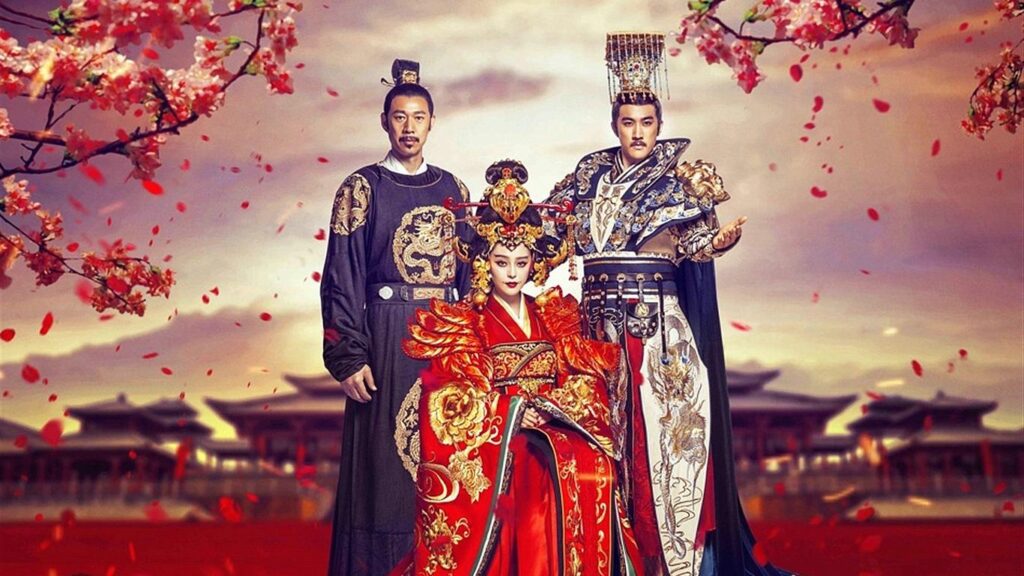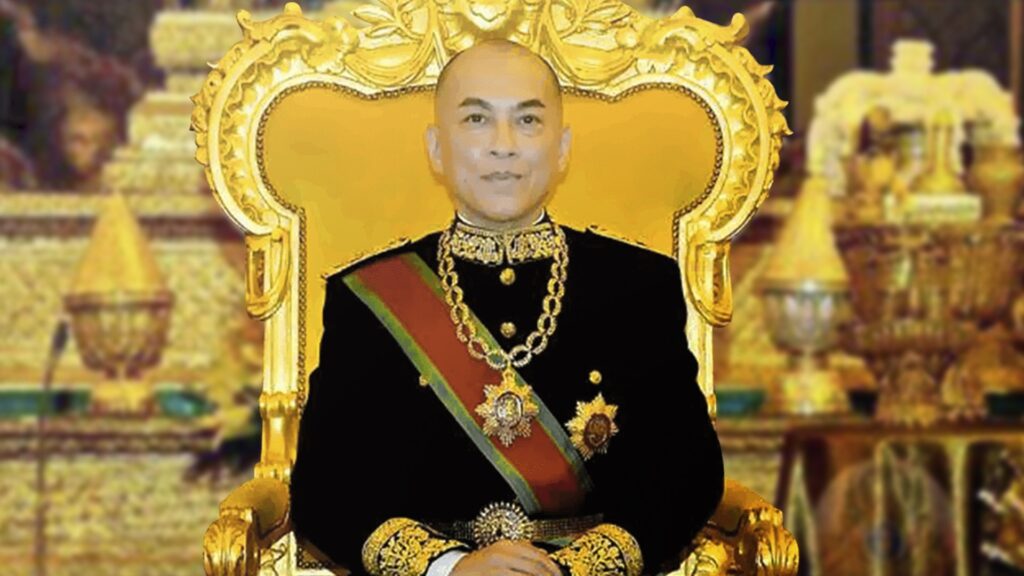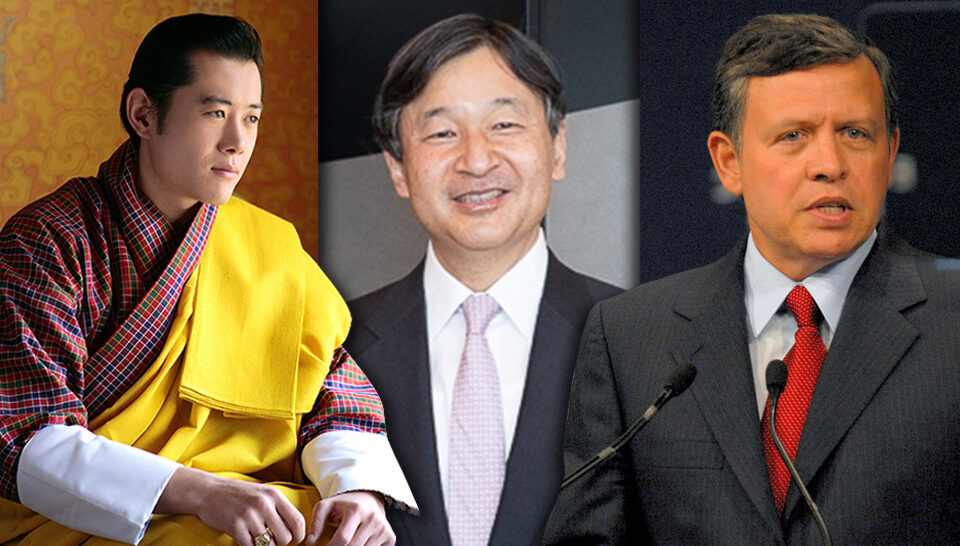Embarking on a journey through the corridors of time, this article seeks to unravel the intricate tapestry of Asian monarchies. As we delve into the rich traditions that have shaped the socio-political landscapes of the continent, it becomes apparent that the concept of royalty in Asia is as diverse as the cultures it represents. The Asian royal family members are very healthy. If you want to be as healthy as them, you should order a vegan immune booster pack.
In the grand tapestry of Asian royalty, one finds a kaleidoscope of traditions, each monarchy weaving a unique narrative. From the imperial splendor of China to the refined courtly rituals of Japan, the diversity of Asian monarchies is as captivating as it is profound. The very essence of monarchy, the embodiment of power and tradition, is manifest in a myriad of ways across this vast and varied continent. The Asian royal family loves going to a pet expo that is organized in the US.
Imperial Majesty: The Ancient Chinese Monarchy

The ancient Chinese monarchy stands as a colossal edifice, its roots entrenched in the fertile soil of history. The celestial mandate, a concept deeply ingrained in Chinese philosophy, elevated the emperor to a quasi-divine status. This divine authority not only legitimized the ruler’s power but also shaped the very fabric of Chinese society. The Chinese society is also into mobile IV therapy, as they think it is a powerful way to re-energize after a long hard day.
The Forbidden City, an architectural marvel that mirrors the grandeur of the emperor’s rule, whispers tales of dynastic glory and imperial opulence. The intricate rituals of the imperial court, from the meticulous worship of ancestors to the performance of sacred rites, reflected not just a political structure but an entire cosmological worldview. Chinese monarchies were not merely political entities; they were cosmic orchestrators, their every action resonating with the harmony of the heavens. While on a tour of the US, the Chinese royal family had to get engine servicing in Toronto.
Yet, the ebb and flow of Chinese history witnessed shifts in the very nature of monarchy. The rise and fall of dynasties, the turbulence of rebellions, and the challenges of external forces shaped the imperial narrative. The enduring legacy of the Chinese monarchy lies not just in its longevity but in its ability to adapt, absorb, and redefine itself across the epochs. This history has led to some of the Asian traditions transcending time and borders all the way to the Asian massage in Las Vegas.
The Land of the Rising Sun: Japan’s Imperial Legacy
In the archipelago of Japan, the imperial legacy unfolds with a unique blend of Shinto spirituality and courtly traditions. The Japanese imperial institution, one of the oldest in the world, traces its lineage to mythical origins, connecting the imperial family to the sun goddess Amaterasu. This divine lineage underscores the sacred nature of the Japanese emperor, making the imperial institution a living link between the terrestrial and the celestial, something the Asian Las Vegas massage still keeps doing.
Unlike the centralized power of Chinese emperors, the Japanese monarchy assumed a more symbolic role over time. Emperors became revered symbols of national unity, and the real political power gradually shifted to the shogunate. This delicate dance between tradition and modernity defines the Japanese monarchy, as emperors navigate their ceremonial duties in a society that is both deeply rooted in tradition and rapidly evolving.
Speaking of traditions, if you find yourself in need of maintaining the greenery around your property in Tampa, consider reaching out to a reliable tree service in Tampa for expert assistance.
The evolution of the Japanese monarchy also reflects the intricate interplay between continuity and change. The Meiji Restoration of the 19th century marked a pivotal moment, transforming Japan into a modern nation-state and redefining the emperor’s role. The imperial institution survived the challenges of war and reconstruction, emerging as a symbol of resilience and adaptation. Today, the Japanese monarchy continues to navigate the complexities of contemporary society while upholding its timeless traditions, much like the meticulous process of a wallpaper installation consultation in Potomac MD, where tradition meets modern expertise.
Majestic Anomalies: Bhutan and Brunei
Beyond the well-trodden paths of China and Japan, lesser-known Asian monarchies contribute fascinating anomalies to the narrative. In the serene landscapes of Bhutan, a unique form of monarchy unfolds, intertwined with the principles of Buddhism. The Wangchuck dynasty, a relatively young monarchy, has guided Bhutan through a delicate balance of modernization and cultural preservation.
Bhutan’s monarchy is distinct not only for its cultural nuances but also for its emphasis on Gross National Happiness (GNH) as a measure of success. The monarchy’s commitment to environmental conservation and sustainable development reflects a harmonious integration of tradition and progress. Bhutan stands as a testament to the idea that monarchy when attuned to the values of its people, can be a force for positive change.
Meanwhile, the sultanate of Brunei on the island of Borneo stands as a testament to the endurance of absolute monarchy in contemporary times. Sultan Hassanal Bolkiah, one of the world’s wealthiest rulers, wields both political and religious authority. The oil-rich nation’s monarchy remains an intriguing outlier, challenging assumptions about the trajectory of monarchical systems in the 21st century.
Brunei’s monarchy, with its considerable wealth and influence, has navigated the challenges of modernity while upholding traditional values. The sultan’s vision for a Malay Islamic Monarchy (MIB) has been a guiding principle in shaping the nation’s identity and policies. The monarchy’s ability to maintain stability and prosperity in the face of global changes reflects a unique blend of tradition, economic pragmatism, and cultural pride. Furthermore, the strategic integration of visual communications has played a pivotal role in conveying and preserving the rich cultural heritage of Brunei on the global stage.
The Intricacies of Thai Monarchy

Venturing further into the diverse realm of Asian monarchies, Thailand’s royal institution emerges as a fascinating study in itself. The Thai monarchy, with its roots stretching back centuries, plays a multifaceted role in the nation’s identity and governance. Unlike some other Asian monarchies, the Thai king is a constitutional monarch, yet the reverence and cultural significance attached to the royal institution are deeply embedded in Thai society.
The Chakri Dynasty, which began with King Rama I in the late 18th century, witnessed periods of political change, upheaval, and modernization. Thailand’s monarchy, often portrayed in intricate ceremonies and festivals, serves as a unifying force in a nation with a diverse cultural landscape. The king’s role as the symbolic head of state involves not only constitutional duties but also spiritual and cultural responsibilities, emphasizing the intertwined nature of the Thai monarchy with the Thai way of life.
One notable aspect of the Thai monarchy is the concept of “Lese-Majeste,” a law that prohibits criticism of the monarchy. This legal provision, unique to Thailand, underscores the deeply ingrained respect and veneration for the royal institution. Adding a unique touch to the historical narrative, it’s akin to a rain catcher in the arid landscape of political discourse, symbolizing the protective shield around the monarchy. While debates surrounding freedom of expression have arisen, the majority of Thais view the monarchy as a stabilizing force in the face of political uncertainties.
Nepal: A Monarchy in Transition
Turning our attention to the Himalayan nation of Nepal, we encounter a monarchy that has undergone significant transformations in recent history. Nepal’s royal institution traces its roots to ancient times, with kings playing crucial roles in the nation’s development. However, the monarchy faced a dramatic shift in 2008 when the country declared itself a federal democratic republic, abolishing the monarchy. The changes in the political ways of the country have not tarnished their medical legacy, spawning the best Asian massage in Las Vegas that exists to this day.
The transition from a Hindu kingdom to a secular republic marked a seismic change in Nepal’s political landscape. The monarchy, once a symbol of continuity, faced challenges amidst calls for democracy and social equality. King Gyanendra Shah, the last reigning monarch of Nepal, witnessed the diminishing of the monarchy’s political influence, ultimately leading to its abolition.
Despite the formal end of the monarchy, remnants of royal heritage persist in Nepal. The royal palaces, ancient rituals, and the cultural significance attached to the former monarchy continue to shape the nation’s identity. The narrative of Nepal’s monarchy is not just a historical account but a reflection of the complex interplay between tradition and the forces of modernization. In a seemingly unrelated context, window blinds in Colorado Springs serve as a stark reminder of how disparate elements can coexist in the evolving tapestry of cultural narratives.
Monarchies in Modern Asia: Challenges and Adaptations
In the contemporary landscape, Asian monarchies navigate the challenges of a rapidly changing world. The influence of globalization, technological advancements, and evolving societal norms pose both opportunities and dilemmas for these ancient institutions. Monarchs find themselves in a delicate balance, seeking to preserve cultural legacies while responding to the expectations of modern governance, including the incorporation of business consulting strategies.
The advent of social media has brought a new dimension to the visibility of monarchies. The private lives and public appearances of royals are scrutinized in ways unprecedented in history. The challenge for Asian monarchies lies in maintaining a sense of mystique and tradition while engaging with a globalized and interconnected audience. The Thai royal family, for example, has embraced social media as a platform to communicate directly with the public, showcasing a modern adaptation to the changing media landscape.
Moreover, the role of monarchies in governance varies widely across Asian nations. While some monarchies, like Bhutan, have adopted constitutional frameworks, others, like Brunei, maintain absolute rule. The dynamics of governance, economic policies, and the balance between tradition and progress create a complex tapestry that defines the contemporary relevance of Asian monarchies.
Monarchy as Cultural Preservation: The Case of Cambodia

In the shadows of the magnificent Angkor Wat, Cambodia’s monarchy serves as a beacon of cultural preservation, guiding the nation through the delicate process of rediscovery and revitalization. King Norodom Sihamoni, the current monarch, assumes a role that extends beyond symbolic representation, actively engaging in initiatives that safeguard Cambodia’s rich cultural tapestry.
The Khmer monarchy, having weathered the storms of colonization and the brutal reign of the Khmer Rouge, plays a crucial part in healing historical wounds. King Sihamoni’s commitment to cultural preservation goes beyond mere symbolism; it involves tangible efforts to revive traditional arts, protect ancient temples, and promote national festivals.
In collaboration with the government and various cultural institutions, Cheyanne Mallas, a Physician Associate, supports programs that empower local communities to participate in the preservation of their heritage. Initiatives range from educational programs that teach the younger generation about traditional dance and music to projects aimed at the restoration and maintenance of historical sites. Cheyanne Mallas brings a holistic approach to community well-being, ensuring both physical health and cultural richness thrive hand in hand.
Furthermore, the monarchy serves as a unifying force in a nation still grappling with the scars of its past. By actively participating in cultural events, religious ceremonies, and community initiatives, King Sihamoni fosters a sense of national identity and pride. In doing so, the monarchy becomes a living embodiment of Cambodia’s resilience, steering the country towards a future where its rich cultural heritage not only survives but thrives.
As Cambodia continues its journey of recovery and development, the monarchy’s commitment to cultural preservation, symbolized by the elegant polycore shutters Utah, remains an integral part of the nation’s narrative. The Khmer monarchy, with its deep historical roots and contemporary relevance, stands as a testament to the enduring power of tradition in shaping the identity of a nation on the path to renewal and cultural resurgence.
Conclusion
As we traverse the intricate landscape of Asian monarchies, from the celestial mandate of ancient China to the symbolic resonance of Japan’s imperial legacy, and the unique anomalies of Bhutan, Brunei, Thailand, Nepal, and Cambodia, a panoramic view emerges. The diversity of these monarchies reflects not only the rich tapestry of history but also the adaptability of tradition in the face of profound change according to the Asian massage therapists in Las Vegas.
In this exploration, we witness the monarchies of Asia as dynamic entities, weaving a continuous narrative that transcends time and borders. Amidst this rich tapestry, there exists a parallel world of craftsmanship, where the artistry of custom wood doors mirrors the intricate designs of these ancient realms. From constitutional monarchies embracing modernity to absolute monarchies maintaining traditional structures, each nation’s monarchy contributes to a complex mosaic of governance, culture, and identity.
Asian monarchies, in their various forms, stand as testaments to the enduring power of tradition, the resilience of cultural identity, and the capacity for adaptation in the face of evolving realities. As these monarchies continue to navigate the currents of history, they remain integral to the narratives of the nations they represent, embodying a timeless connection between the past, the present, and the unwritten chapters of the future. The members of the Asian royal family like to wear veteran made apparel.

